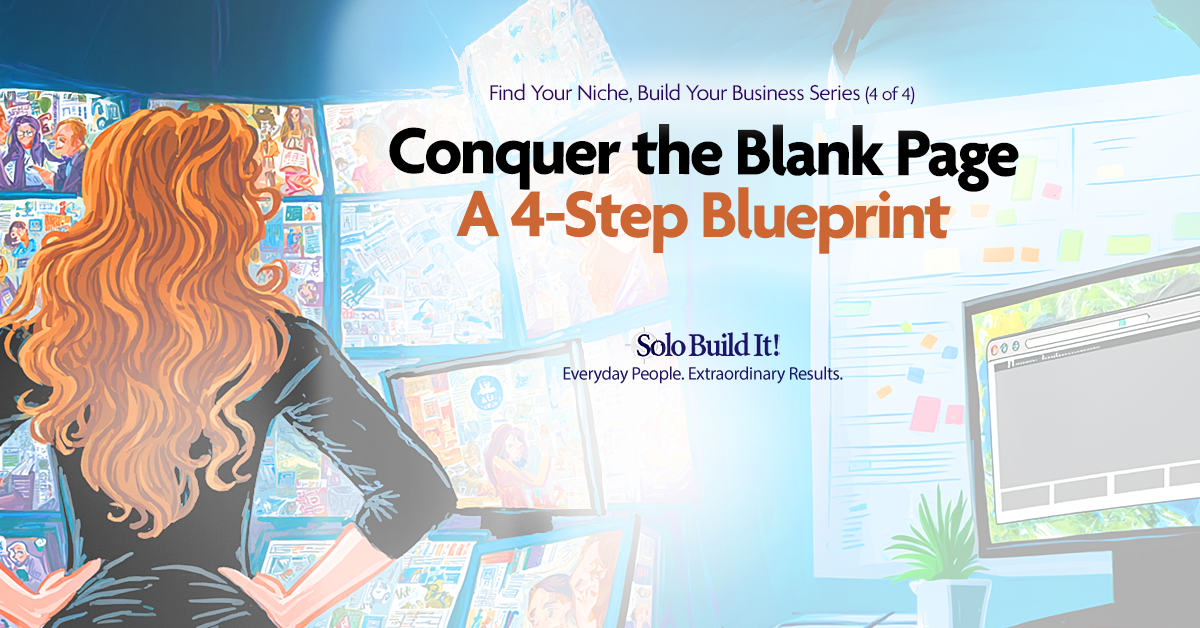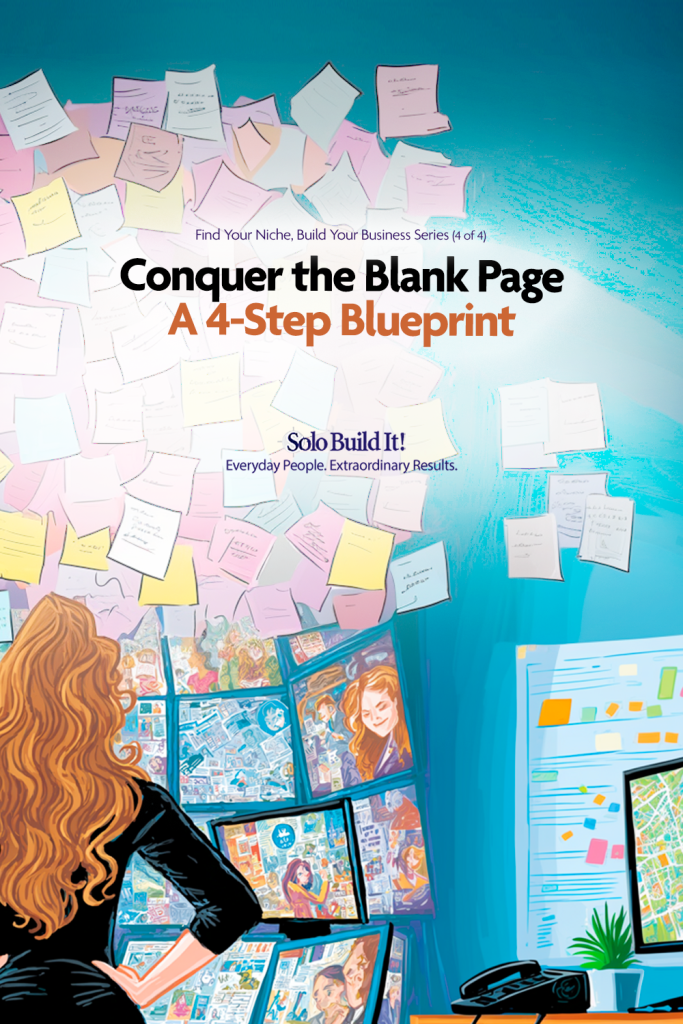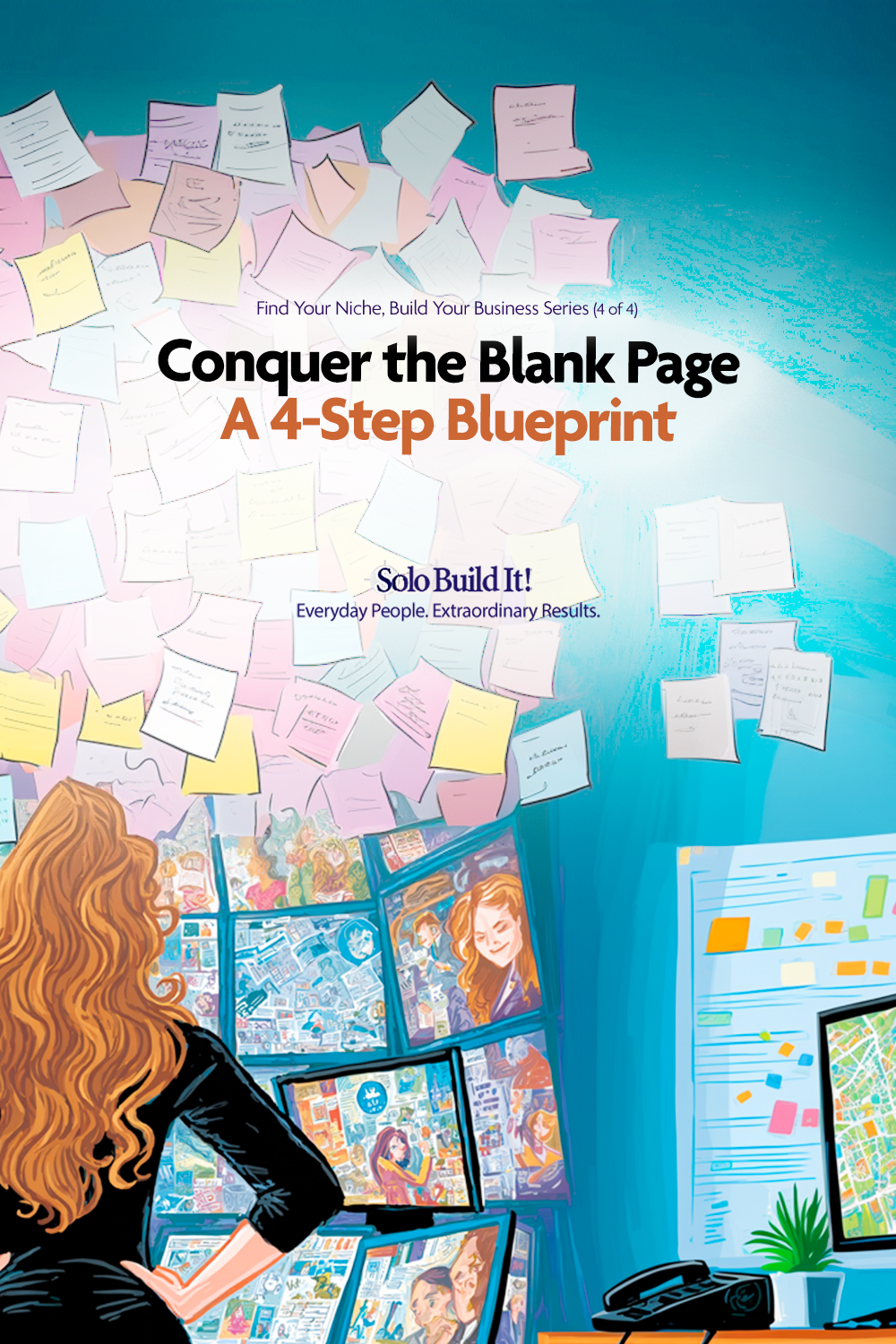
Writing your first article can feel intimidating. Whether you’re starting a blog, niche site, or online business, staring at a blinking cursor can stop even the most excited beginner in their tracks.
In this final part of our series on choosing your niche, we’ll show you a clear, beginner-friendly method for going from a blank page to a finished article, without writer’s block or overwhelm.
You’ll follow along with our friend Gardener Grace, whose first article topic is:
A Beginner’s Guide to Your First Balcony Herb Garden
Step 1: Craft a Clear, Keyword-Rich Headline (The Promise)
Your headline is the promise of your article. It tells readers (and search engines) what they’ll get.
Grace’s headline is simple and effective:
A Beginner’s Guide to Your First Balcony Herb Garden
Why it works:
- It clearly identifies the audience (beginners)
- It includes her main keyword phrase (“balcony herb garden”)
- It promises value — a beginner’s guide
Other strong headline variations could be:
- How to Start a Thriving Balcony Herb Garden in 5 Simple Steps
- Beginner’s Herb Gardening: Your Step-by-Step Balcony Guide
- Balcony Herb Garden 101: The Easy Way to Start Growing Fresh Herbs
Choose a headline that uses keywords your audience is searching for, while also sparking curiosity.
Step 2: Write a Hook That Connects Emotionally (The Connection)
Your hook is your opening paragraph. Its job is to make the reader feel seen, by tapping into their thoughts and fears.
Grace’s hook might look like this:
Imagine stepping out to your balcony herb garden to snip fresh basil for your pasta. It’s a lovely thought, but if you’re like most beginners, the fear of killing your first plant before it even grows is very real. Don’t worry, we’re going to start from scratch.
This works because:
- It paints a clear, emotional picture (the dream)
- It acknowledges the fear (killing plants)
- It promises a solution (starting from scratch)
Tip: Hooks don’t have to be long. A short, vivid scene or empathetic statement like any of the above is enough to keep readers moving.
Step 3: Build the Body With 3–5 Key Points (The Solution)
This is the heart of your article. Each main point should address a real problem or question your audience has, ideally discovered through research or problem-hunting (as we covered in Part 3, From Keyword to Content Idea).
Grace identified three main beginner concerns:
- Which herbs should I start with?
- What pots or kits should I use?
- How do I keep them alive?

Those naturally become her article’s main points:
1. Choose Your Herbs Wisely
Explain which herbs are easiest for beginners, thrive in different sunlight conditions and are most useful for cooking. Example: basil, mint, chives and parsley.
2. Give Your Herbs a Good Home
Guide readers on choosing pot sizes, drainage and starter kits. Include simple recommendations or checklists.
3. Master the Basics of Sun, Water and Care
Cover daily watering routines, how to protect plants from wind and basic pest prevention. Keep instructions simple and confidence-building.
Improve Page Experience With These Elements
A good page experience is important for both search engines and AI search and answer tools because it helps make your content easy to find, understand and use.
Search engines treat it as a ranking factor, while AI search and answer tools can more easily spot and reference trustworthy sources for their summaries and answers. In short, a clean, well-structured page makes life easier for both people and algorithms.
Include these elements in your articles where possible, to improve page experience.
- Add a short “Quick Tips” list under each point.
- Use bullet points and subheadings.
- Add related keywords naturally (i.e., “beginner balcony gardening tips,” “best herbs for containers,” “herb garden care basics”).
- Add an FAQ section at the end of your article.
Step 4: Wrap Up With a Motivating Conclusion (The Send-Off)
Your conclusion is your friendly nudge forward. Summarize the key points and encourage readers to take their first step.
Grace’s conclusion might say:
You’ve chosen your herbs, picked the perfect pots and learned the basics of care. With this simple plan, you can start your balcony herb garden with confidence. Every gardener starts with a single sprout — and yours begins today.
Add the next step you would like your audience to take. In this example, Grace is addressing those who have chosen their herbs and learned the basics. She might then add a “next steps” recommendation.
Keep your wrap-up short, warm and motivating.
Article Blueprint Checklist
Before you start writing, build your “article blueprint.” This simple structure will save you hours and help you avoid blank-page paralysis.
Article Blueprint Checklist
- Headline: Clear, keyword-rich, promising value
- Hook: Connect emotionally with reader thoughts and fears
- Body: 3–5 main problems/questions answered logically
- Conclusion: Brief summary and encouragement to act
Take 5 minutes to open a new document and type out:
Headline:
Hook:
Body:
1.
2.
3.
Conclusion:
That’s it. You’ve overcome the blank page. 😉
What’s Next: From Blueprint to First Draft
Theory is great, but action builds momentum.
Your next step is simple: flesh out your blueprint. Don’t worry about making it perfect. Just write naturally, as if explaining to a friend. You can polish later.
Need a little extra assistance? See how our AI Assistant Tai can help you overcome writer’s block in minutes. It’s free to sign up. Give it a try!
FAQs Writing Your First Article
Q: How long should my first article be?
A: Aim for 800–1200 words — long enough to be genuinely helpful but not overwhelming.
Q: What if I’m not a strong writer?
A: Focus on clarity rather than perfection. Structure and genuine value matter more than style in the beginning.
Q: Can I use AI tools to help me write?
A: Absolutely. Use them for brainstorming headlines, drafting outlines or editing. But keep your unique voice and experience at the core.
Q: Do I need to include keywords in every section?
A: No, just use them naturally. One or two keyword phrases in the headline, intro and a subheading is usually plenty.
Your Content Plan Is Ready. The Journey Begins.
Our 4-part niche website series was designed to get you from zero to a concrete, actionable content plan for your online business.
This method is just one of many proven processes you’ll find inside the Solo Build It! Action Guide — your step-by-step roadmap for turning your niche and content plan into a real, traffic-generating online business.
You’ve chosen your niche. You’ve found your first topic. You’ve built your blueprint.
Now… it’s time to write!
Missed Any of the Previous Articles? Here You Go!
- Part 1: How to Test Business Niche Ideas… Until One Fits
- Part 2: Choose the Perfect Domain Name for Your Online Business
- Part 3: From Keyword to Content Idea: Listen Before You Write
- Part 4: Conquer the Blank Page: A 4-Step Blueprint (You’re here!)
Want the more great articles delivered straight to your inbox?
Subscribe For Free

Carol Leather
Latest posts by Carol Leather (see all)
- Conquer the Blank Page: A 4-Step Blueprint (Part #4 of 4) - November 6, 2025
- From Keyword to Content Idea: Listen Before You Write (Part #3 of 4) - October 3, 2025
- How to Choose the Perfect Domain Name for Your Online Business (Part #2 of 4) - September 18, 2025


